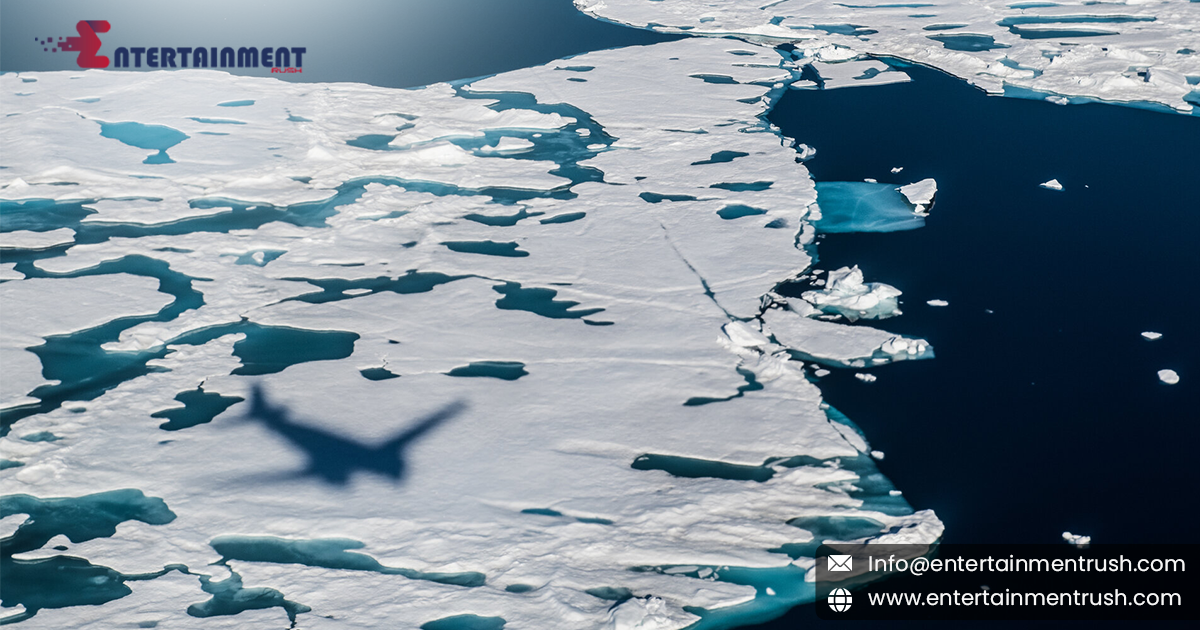NASA’s renewed focus on the Arctic is not just a routine visit but a pivotal effort to understand one of the most pressing environmental issues of our time: the rapid melting of summer sea ice. As climate change accelerates, the Arctic region is undergoing dramatic transformations that could have profound global consequences. This blog delves into NASA’s latest Arctic expedition, the scientific objectives behind it, and the broader implications of sea ice melt on our planet.
The Significance of Arctic Sea Ice
Sea ice in the Arctic plays a crucial role in regulating the Earth’s climate. It reflects sunlight back into space, helping to cool the planet, while also influencing ocean circulation and weather patterns. The melting of summer sea ice not only contributes to rising sea levels but also exacerbates global warming by reducing the Earth’s albedo, or reflectivity. As the ice melts, darker ocean waters absorb more heat, leading to further warming—a feedback loop that accelerates climate change.
NASA’s Arctic Mission: Objectives and Goals
NASA’s Arctic mission aims to address several key objectives:
Quantifying Ice Loss:
One of the primary goals is to measure the extent and volume of summer sea ice. NASA utilizes a range of technologies, including satellite observations and aerial surveys, to gather data on ice thickness, concentration, and distribution.
Understanding Ice Dynamics:
Researchers are also focused on understanding the dynamics of ice movement and deformation. By studying how ice flows and interacts with the surrounding environment, scientists can gain insights into the processes driving ice loss.
Model Validation:
The data collected will be used to validate and improve climate models. Accurate models are essential for predicting future changes in sea ice extent and assessing the potential impacts on global climate systems.
Ecosystem Impacts:
The mission also investigates how the loss of sea ice affects Arctic ecosystems, including wildlife and indigenous communities. Changes in ice cover can impact habitats, food sources, and traditional ways of life.
Key Technologies and Methods
NASA’s approach to studying Arctic sea ice involves several advanced technologies and methodologies:
Satellites:
Satellites such as NASA’s Operation IceBridge and the European Space Agency’s CryoSat-2 provide critical data on ice thickness and surface elevation. These satellites offer a comprehensive view of the Arctic from space.
Airborne Surveys:
NASA deploys aircraft equipped with specialized instruments to conduct airborne surveys of the Arctic. These surveys capture high-resolution data on ice characteristics and help validate satellite measurements.
Buoys and Sensors:
Drifting buoys equipped with sensors are deployed across the Arctic Ocean to monitor ice conditions in real time. These buoys provide valuable information on ice temperature, salinity, and movement.
Recent Findings and Implications
Recent data from NASA’s Arctic missions have highlighted several alarming trends:
Record-Low Ice Extent:
The extent of summer sea ice has reached record lows in recent years, with the 2020 Arctic sea ice minimum being one of the lowest on record. This decline has been linked to rising temperatures and changing weather patterns.
Thinning Ice:
The thickness of Arctic sea ice has also decreased significantly, with the ice becoming thinner and more susceptible to melting. This thinning trend has implications for ice stability and overall ice volume.
Accelerated Melting:
The rate of ice melt has accelerated, with scientists observing faster than expected reductions in ice cover. This rapid melting contributes to higher sea levels and influences weather patterns around the globe.
Broader Impacts
The melting of Arctic sea ice has far-reaching implications beyond the Arctic region:
Sea Level Rise:
The loss of ice contributes to rising sea levels, which can lead to coastal erosion, increased flooding, and displacement of communities around the world.
Weather Patterns:
Changes in sea ice affect weather patterns, potentially leading to more extreme weather events such as heatwaves, storms, and heavy precipitation.
Global Climate:
The feedback loop created by melting ice amplifies global warming, making it increasingly challenging to mitigate climate change and achieve international climate goals.
NASA’s Arctic mission is a critical component of ongoing efforts to understand and address climate change. By providing valuable data and insights into sea ice dynamics, the mission contributes to our ability to predict future changes and develop strategies for adaptation and mitigation.
As the Arctic continues to undergo rapid transformation, the need for continued research and monitoring is more urgent than ever. NASA’s commitment to studying summer sea ice melt not only enhances our understanding of this critical issue but also underscores the importance of global cooperation in addressing the challenges posed by climate change.
NASA’s revisitation of the Arctic is a vital step in unraveling the complexities of sea ice melt and its global repercussions. By leveraging cutting-edge technology and scientific expertise, we can better grasp the full extent of environmental changes and work towards a more sustainable future for our planet.
